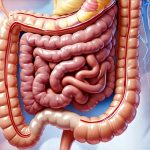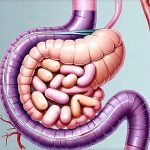The rising prevalence of allergies, histamine intolerance, and seemingly unexplained rashes has prompted a deeper look beyond traditional allergy testing and environmental triggers. For many individuals struggling with these conditions, the root cause may lie not solely in external factors but within their gut microbiome. The gut, often referred to as our ‘second brain,’ is far more than just a digestive organ; it’s a complex ecosystem intimately connected to nearly every system in the body, including the immune system. Understanding this connection is crucial for addressing chronic histamine-related symptoms and achieving lasting relief. This article will explore how the health of your gut can profoundly influence histamine reactions, rashes, and allergic responses, moving beyond simple avoidance strategies towards more holistic approaches.
The intricate relationship between the gut and these conditions stems from several key factors. First, a significant portion of our immune system resides in the gut – approximately 70-80%—making it a primary site for immune regulation. Second, the gut microbiome plays a vital role in ‘training’ the immune system to differentiate between harmless substances and genuine threats. An imbalanced gut microbiome (dysbiosis) can lead to an overactive or misdirected immune response, contributing to heightened sensitivity to histamine and increased allergic reactions. Finally, the gut is responsible for metabolizing histamine; if this process is impaired due to gut dysfunction, histamine levels can build up, leading to a cascade of symptoms. It’s not just about what you’re allergic to, but how your body interprets these substances, and the gut is central to that interpretation.
The Gut-Immune Connection & Histamine Metabolism
The immune system and the gut are inextricably linked, operating in a constant state of communication. This communication happens through several mechanisms. One key player is the gut barrier – a single layer of cells lining the intestinal wall. A healthy gut barrier selectively allows nutrients to pass into the bloodstream while preventing harmful substances like undigested food particles, toxins, and bacteria from entering. When this barrier becomes compromised—often referred to as “leaky gut”—it allows these substances to enter circulation, triggering an immune response. This chronic activation can lead to systemic inflammation and heightened sensitivity to histamine.
- Increased intestinal permeability (leaky gut) is frequently associated with dysbiosis.
- The immune system responds to perceived threats from the compromised barrier, leading to a state of hypervigilance.
- Chronic inflammation further weakens the gut barrier, creating a vicious cycle.
Histamine itself isn’t inherently bad; it’s a crucial neurotransmitter involved in numerous bodily functions, including digestion, sleep-wake cycles, and immune responses. However, problems arise when histamine metabolism is impaired. A key enzyme responsible for breaking down histamine is diamine oxidase (DAO), primarily found in the gut. Dysbiosis can reduce DAO production or damage the intestinal lining where DAO resides, leading to decreased histamine breakdown. This results in elevated histamine levels and subsequent symptoms like hives, flushing, headaches, digestive issues, and anxiety – all hallmarks of histamine intolerance. Furthermore, certain bacteria within the microbiome actually produce histamine, further exacerbating the issue if gut balance is off. Understanding gut inflammation can help explain these processes.
Gut Dysbiosis & Allergic Responses
Gut dysbiosis refers to an imbalance in the composition of the gut microbiota—a decrease in beneficial bacteria and an increase in potentially harmful ones. This imbalance can profoundly impact allergic responses in several ways. Firstly, a diverse microbiome promotes immune tolerance – teaching the immune system to recognize harmless substances as such. A lack of diversity means the immune system is more likely to overreact to these substances, leading to allergies. Secondly, dysbiosis can alter the gut barrier function, increasing permeability and allowing allergens to enter circulation more easily. Thirdly, certain bacteria produce metabolites that influence immune cell activity, either promoting or suppressing inflammation.
The types of bacteria present in the gut heavily influence allergic responses. For example:
– Bifidobacterium and Lactobacillus strains are generally associated with reduced allergy risk and improved immune regulation.
– An overgrowth of certain species like Clostridioides difficile can increase intestinal permeability and trigger inflammatory responses, worsening allergies.
The gut microbiome’s impact extends beyond food allergies to environmental allergens like pollen or dust mites. A healthy gut helps modulate the immune response to these substances, reducing the likelihood of allergic reactions. Conversely, a dysbiotic gut is more likely to mount an exaggerated immune response, leading to symptoms such as sneezing, runny nose, itchy eyes, and skin rashes. It’s important to remember that allergies are rarely solely genetic; they’re often influenced by environmental factors and the state of our gut microbiome. Maintaining gut health is crucial for overall well-being.
Addressing Gut Health for Histamine & Allergy Management
Restoring gut health is a multifaceted process that requires a holistic approach. It isn’t about quick fixes but about creating sustainable changes to support a thriving microbiome and healthy immune function. Here are some key strategies:
- Dietary Modifications: A cornerstone of gut healing is dietary adjustment. This often involves identifying and eliminating food sensitivities (beyond just allergies) that contribute to inflammation. Consider an elimination diet under the guidance of a healthcare professional. Focusing on whole, unprocessed foods, fiber-rich fruits and vegetables, fermented foods (like yogurt, kefir, sauerkraut), and healthy fats supports microbiome diversity. Reducing sugar intake is also crucial as it feeds harmful bacteria.
- Probiotic & Prebiotic Support: Probiotics are live microorganisms that can help repopulate the gut with beneficial bacteria. Prebiotics are fibers that feed these beneficial bacteria, promoting their growth and activity. Choosing the right strains of probiotics is essential; what works for one person may not work for another. Working with a healthcare practitioner to determine appropriate strains based on your specific needs is recommended.
- Stress Management: Chronic stress significantly impacts gut health by altering microbiome composition and increasing intestinal permeability. Implementing stress-reducing techniques like meditation, yoga, deep breathing exercises, or spending time in nature can help restore balance. The gut-brain axis is a two-way street – what affects your mind also affects your gut, and vice versa. Understanding gut transit time can further inform these strategies.
The Role of Gut Healing Protocols
Gut healing protocols are structured approaches designed to address intestinal permeability and dysbiosis. While there’s no one-size-fits-all protocol, they generally involve several steps:
- Remove: Eliminate inflammatory foods like gluten, dairy, sugar, processed foods, and potential allergens.
- Replace: Replenish the gut with essential nutrients – vitamins, minerals, amino acids – often through supplementation.
- Reinoculate: Introduce beneficial bacteria through probiotics and fermented foods.
- Rehabilitate: Support gut barrier function with specific supplements like L-glutamine or zinc carnosine.
These protocols should be implemented under the guidance of a qualified healthcare professional, as they require personalized adjustments based on individual needs and sensitivities. It’s crucial to avoid overly restrictive diets without proper support, as this can further deplete nutrient levels and worsen gut health. The goal is not deprivation but nourishment – providing the gut with what it needs to heal and thrive.
Investigating Underlying Causes & Personalized Approaches
Simply addressing gut symptoms isn’t enough; identifying the underlying causes of dysbiosis is crucial for long-term success. This may involve investigating factors like:
– Chronic infections (e.g., parasitic infections).
– Medications (e.g., antibiotics, proton pump inhibitors).
– Environmental toxins.
– Lifestyle factors (e.g., chronic stress, poor sleep).
Personalized approaches are essential because each individual’s gut microbiome is unique. Testing options like stool analysis can provide valuable insights into the composition of your microbiome and identify specific imbalances. However, test results should be interpreted in conjunction with a healthcare professional who can tailor recommendations based on your individual needs and symptoms. It’s vital to avoid self-diagnosing or self-treating; always seek guidance from a qualified healthcare provider. Addressing gut health isn’t just about managing histamine reactions, rashes, or allergies – it’s about supporting overall well-being and creating a foundation for lasting health. Considering how the vagus nerve regulates gut function can be incredibly helpful, as can understanding nutrition myths. Finally, learning to balance acidity is a key component of gut health. And don’t forget the importance of recognizing a histamine reaction.


















